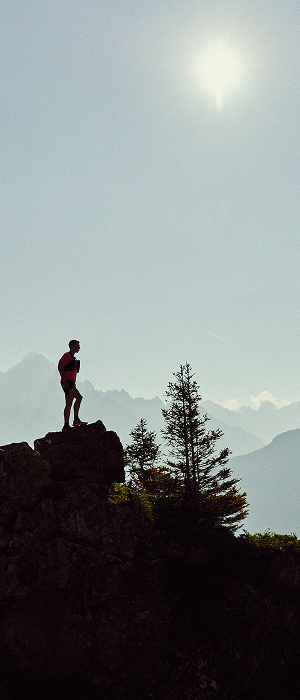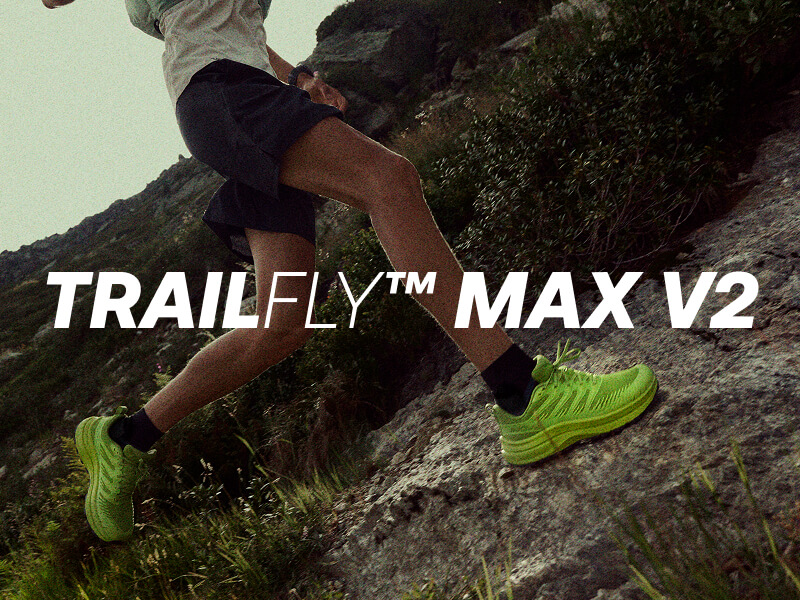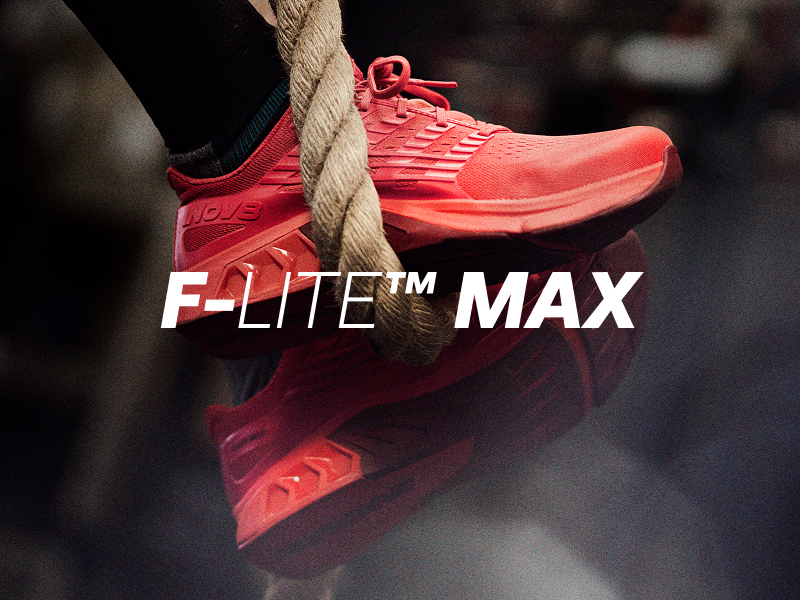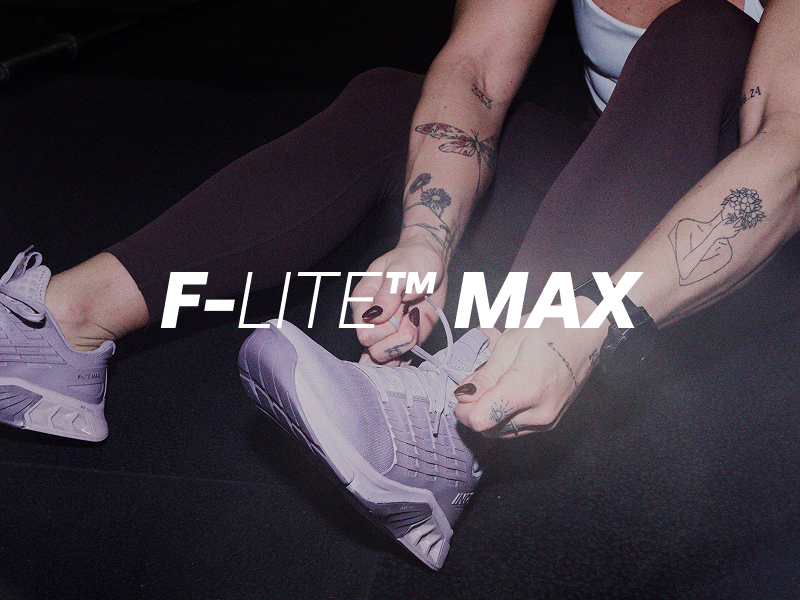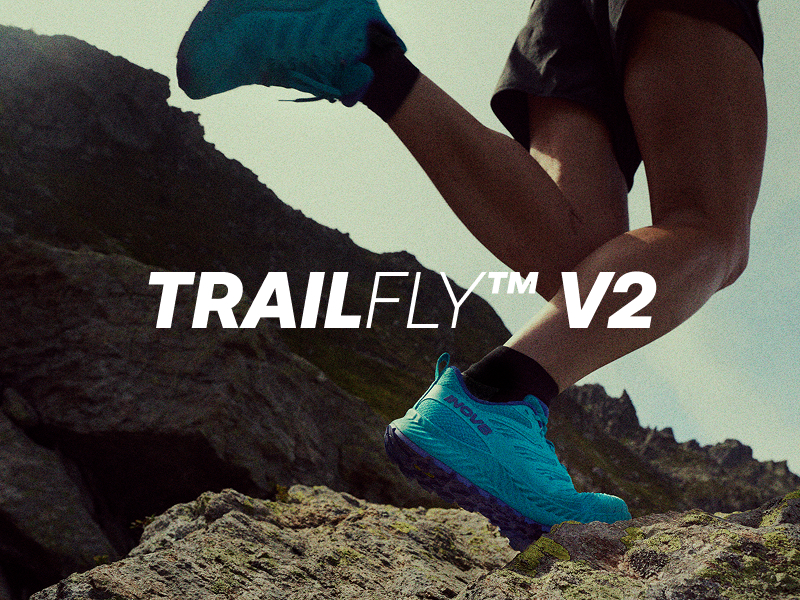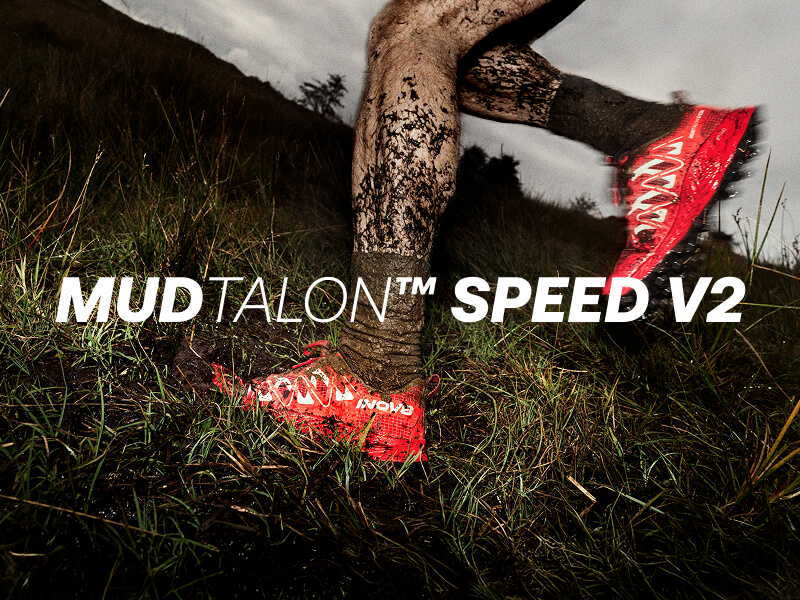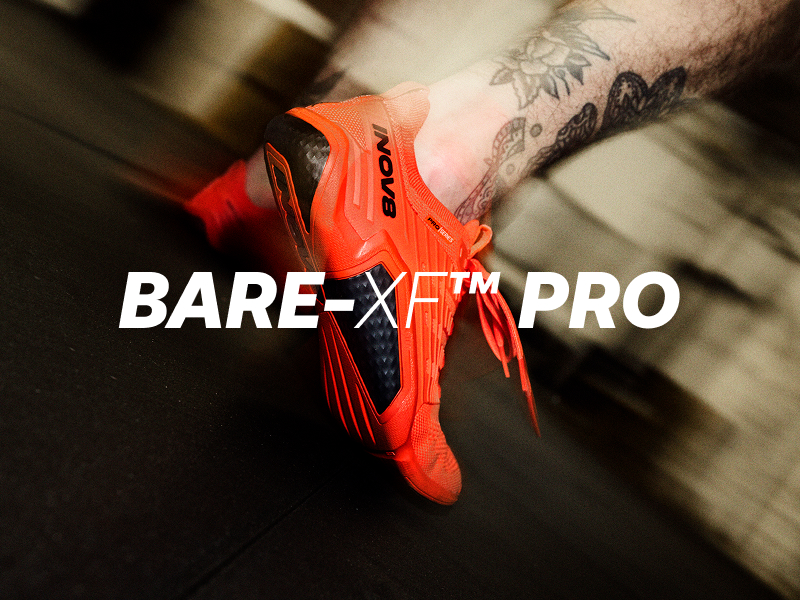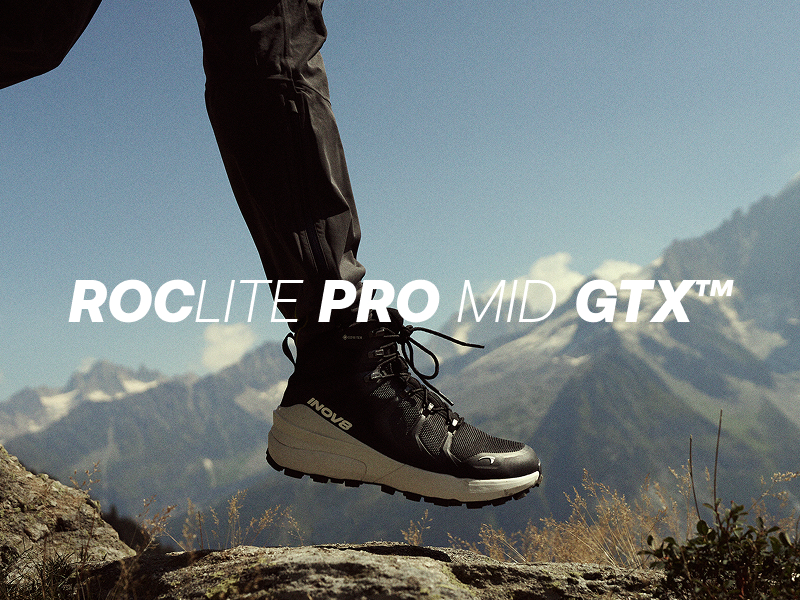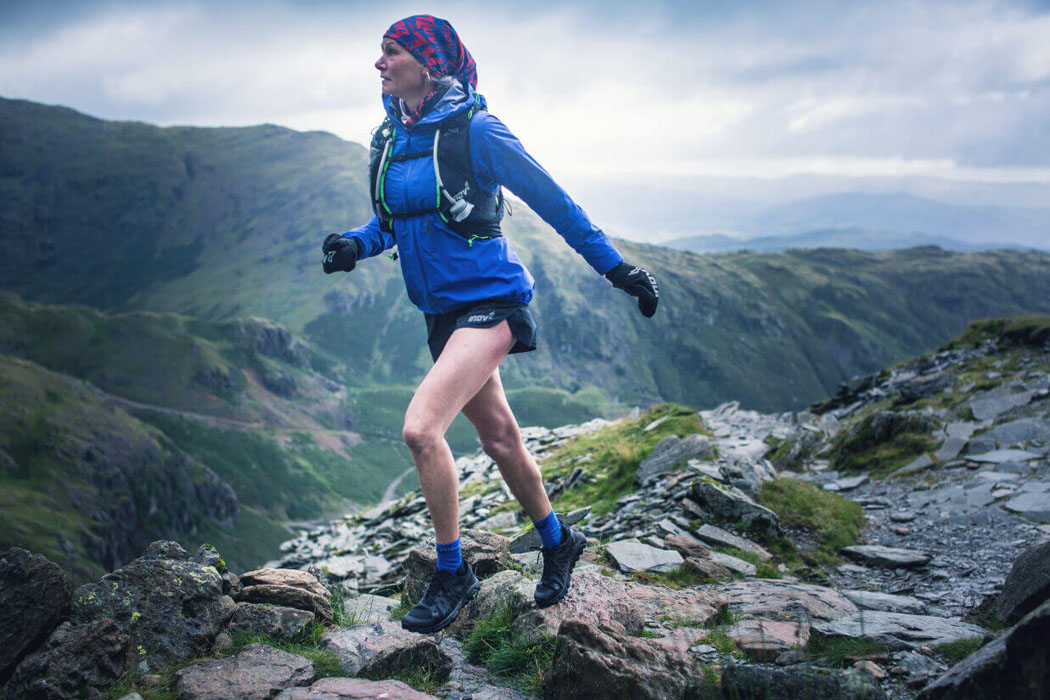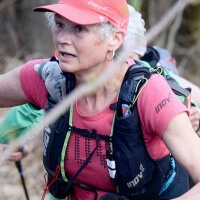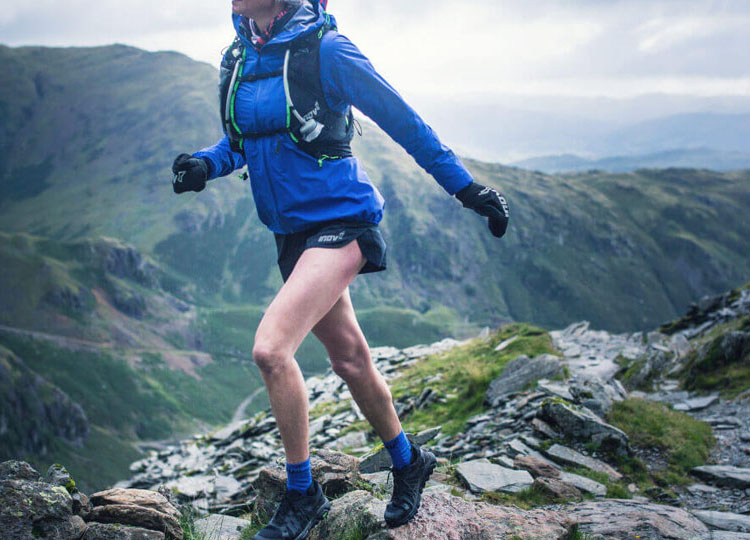
Nicky Spinks is an ultra running legend. She's competed in many of the world's toughest long-distance races over trails and mountains. The biggest of them all is the famous 171km race that starts and finishes in Chamonix, France, and sees runners complete a three-country circumnavigation of Europe's most famous peak, Mont Blanc.
Nicky has twice completed the race and twice crewed it for fellow INOV8 ambassador Damian Hall. In this blog post, Nicky draws on her experiences to provide her essential kit list for the world's biggest ultra-trail running race.
When packing for a race I think logically and start with the clothes I'm going to wear, the pack I'm going to use, the contents it's going to carry, and finally, the dropbag and extras. Before the event I make a handwritten list, which shows the weather forecast (nearer the day) and all the clothes, kit and food that I have. Next to this I have a separate column to record any changes, adding either a tick or a cross.
Then once the event is over, I return to the list and add comments about whether the chosen items worked or didn't work. I also write down what I would do differently next time. This list is invaluable the next time I come to do the same race or a similar length one. Here's what makes my list for racing around Mont Blanc...
WHAT I'D WEAR
Sports Bra
I've used Boobydoo Shock absorber for years.
Knickers
Normal knickers from M&S!
INOV8 Base Elite Long Sleeved & Short Sleeved Tops
I would usually wear the short sleeved one during the day and then either change into the long sleeved overnight or put it on under the short sleeved top. These garments are so light and thin that carrying the one I'm not wearing is nothing. They are excellent pieces of clothing.
INOV8 Graphic Short Sleeved T-Shirt
If I thought it was going to be wet or cold at any point in the race I would exchange the Base Elite short sleeved top for a Graphic Short Sleeved T-shirt. These T-shirts are just slightly thicker and warmer than the Base Elite and make a difference if you need your core to be kept a little warmer. They are more wind proof than the Base Elite too. Either way, the one I didn't take would be in my drop bag (which you get at mile 40 at Courmayeur).
Shorts
I would always wear shorts and the TrailFly 3” 2in1 shorts are great. They are very comfy and don't ride up. They also give you some warmth when the temperature drops and are long enough to be modest (they can be worn with leggings over the top too).
Leggings
Leggings are part of the compulsory kit list. As I have to carry them anyway, if it's cold without being wet I much prefer putting my leggings on rather than my waterproofs. Leaving your shorts underneath means you can whip the leggings off whenever you need to.
Socks
My favourite INOV8 socks are the High Speed Socks because they have always worked for me and the high ankle means I get some ankle protection as well.
Shoes
Since their launch I have been using the TrailFly G 270s for nearly everything. They are very comfy on tracks and stony trails and have grip on most off road terrain. I have found them extremely comfy and I did the 360km Tor des Geants and the 460km Tor des Glaciers in them. I am usually a size 6.5 and step up for 100 mile races to a size 7 but I haven't needed to in either of those races.
Personally I like to be nearer the ground and so I would chose the Trailfly G 270 V2 over the Trailfly Ultra G 280 or Trailfly Ultra G 300 Max. But that is down to personal preference and I've come to ultra running from fell running, so a lot of cushioning is not what's I'm used to.
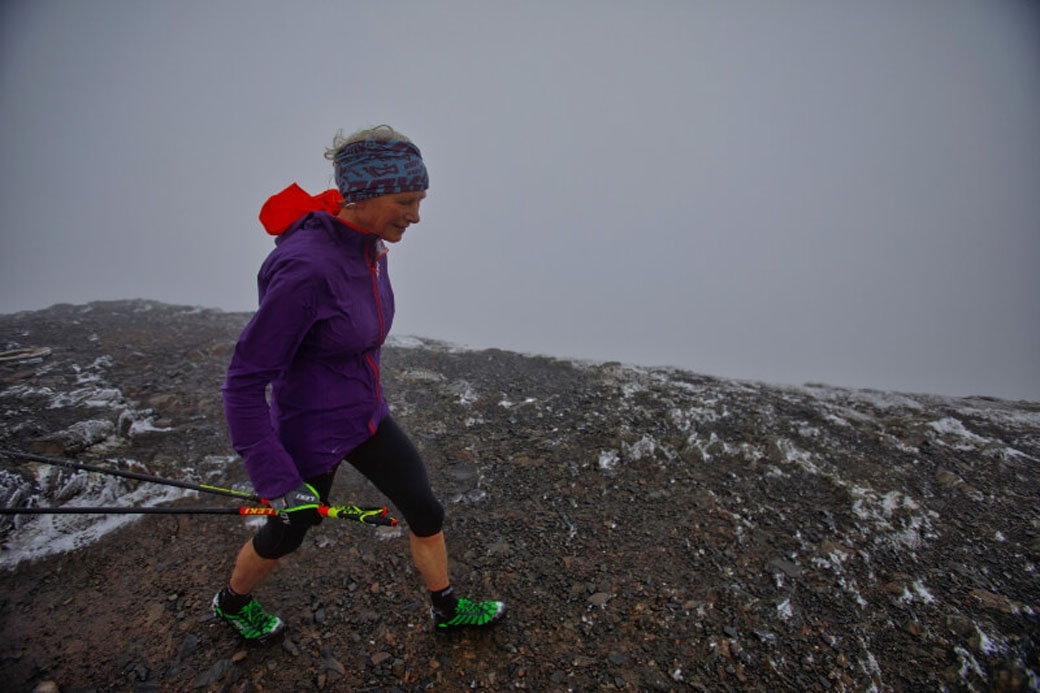

BACKPACK (AND WHAT I'D PUT IN IT)
Backpack
With careful packing, and by using the bladder storage pocket to store clothing, everything will go into this Ultrapac Pro 2in1 pack. This is a great pack for women as it fits snugly and doesn't bounce about. All the pockets down the front are useful for water and food and other essentials.
Waterproof Trousers
I have always used the ultralight Waterproof Racepants for a few reasons. They are light and more comfortable to wear than the heavier waterproof trousers. And my thinking is that because we have to carry leggings that I would be quite happy in shorts, leggings and these pants in a storm (rather than heavier Trailpant Waterproof Trousers).
Waterproof Jacket
I have always taken the Stormshell in the past because it is light, and it fits well with the back covering a lot of my backside as well. The arms are long and the hood fits well around my head.
If it was going to be heavier rain or sleet I would consider swopping this jacket for the Venturelite Jacket as I feel this could tackle any weather the Alps might throw at me.
Gloves
I would take any of the gloves with fingers like the Train Elite Glove and the All Terrain Waterproof Running Mitts (needed for the mandatory kit check).
If it was to be cold overnight or cold and wet at any time then I would also take the Extreme Thermo Mitts. The mitts are invaluable when your hands are cold and I always make sure I get a size bigger than usual. This is because if I need them it's usually cold and wet, my hands will already be a bit cold, and the easiest and quickest way to warm them up is to put my gloved hands into the mitts. Yes this makes the mitts wet, but the chances are they are going to get wet anyway.
All the extra gloves and hats are so useful if you're getting cold and wet. Or even when you get tired and feel the cold more. A couple of extra “accessory” items can help keep morale up. I have learnt that when your hands and head get cold it's very hard to concentrate on anything else. Your brain just shouts “get the hell down”, so being able to whack on something warm quickly and keep moving can be a life or race saver.
Hats
I always make sure I have a multi-use wrag and a cap, plus a waterproof hat with ear muff protection.
Mid Layer
I always prefer a jacket type piece of clothing with a hood for this and INOV8 have developed a few over the years. The current version is the Venturelite Hoodie - and I take it every time I'm on the hills, both in summer or winter.
When the hoodie is combined with the short-sleeved Base Elite tee, it's possible to just use the two items of clothing on a 100 mile race, putting the jacket on and off as you need at altitude or overnight. The hood is amazing at keeping the wind off your neck and off your head while the long, well fitted back keeps your lower back warm. The long sleeves cover the hands when needed. It has pockets for small items. A superb, versatile piece of essential clothing.
Poles
I would have my poles out from the start and use them on the first ascent. So I don't worry about how to store them. I also have not found a good place for me to store them.
As I've started running longer ultras I have gone for the Leki poles as they are light and strong. What I really like about the strap ones is the comfy moulded hand grip. The decision between strap and glove is really how much you think you will need to put your normal gloves on and off (as with the pole glove it's a right faff and you risk losing one of the gloves). The pole gloves give you better attachment to the pole so you can push down more. You also have to detach whenever you're going downhill otherwise you risk breaking your wrist or the pole if you fall.
Headtorch
Paul Tierney lent me a Petzl Reactik on the Tor des Geants and I have since bought three and spare batteries. They are discontinued now but I still buy one if I see it for sale.
I don't like too much technology with the head torch, and the programmable ones just seem to cause problems. The Petzl Reactik is simple and takes rechargeable batteries. It's also small and light, so in fog you can carry it easily in your hand.
Schedule
I always make myself up a schedule (and I do this for runners I coach too). I laminate this and have it to hand.
The schedule tells me what distance, ascent and time is between each food checkpoint. The official “time chart” has a lot of points listed on it that are not checkpoints. This is unnecessary information.
What I need to know when arriving at a food checkpoint is how long am I going to be out when I leave. That tells me how well prepared I have to be when I leave. The schedule is not something I have to run to - but something that is going to tell me the information I need, like where and when I will be in the dark, when to get the heard torch to hand, how much of the second night I'm going to have to run, etc.
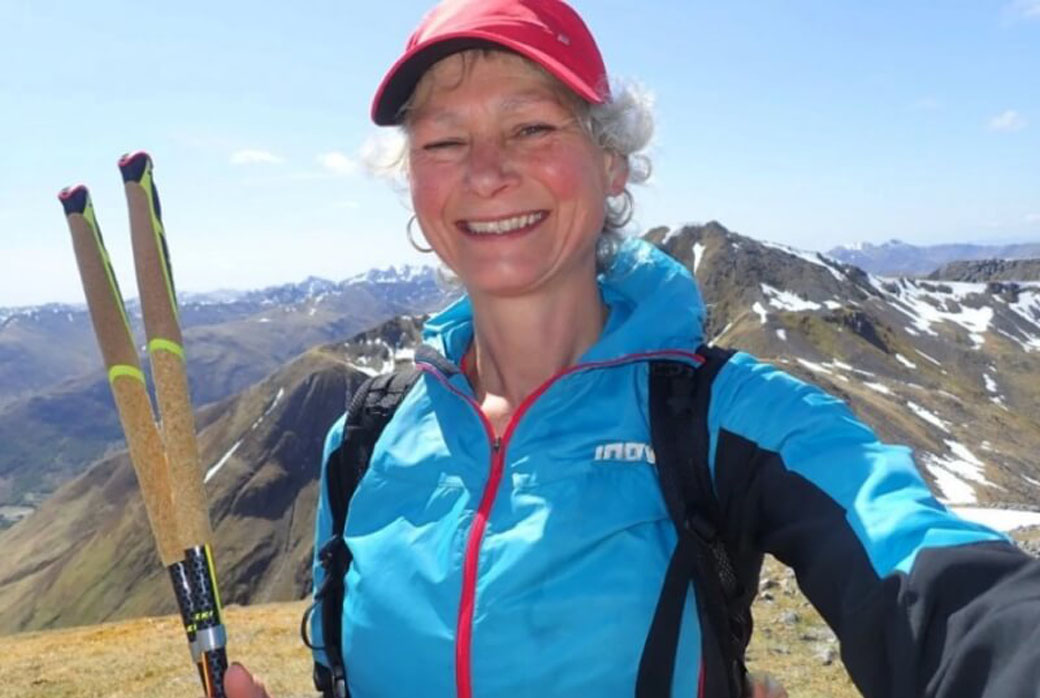

FOOD, GLORIOUS FOOD!
On my first race around Mont Blanc I carried too much food and my pack was heavy. On the second one I decided to use more of the food that was on offer at the checkpoints.
At the first checkpoint I took one of everything and tried it. That way I knew later on which bars I liked and which I didn't. Early on my stomach could cope with anything but I knew later in the race it wouldn't. I also rely on the salty noodle soup that is provided as a base. I make myself eat the pasta when its provided too.
Food that I tend to carry includes:
- Normal chocolate bars such as Cadbury's Brunch bars and Tunnock wafers. These cope well with the temperatures in Europe and don't get too hard when it's cold
- High 5 gels - about 10 initially and 10 in my drop bag (some of my gels will have caffeine in them)
- Fruit pouches that I buy once I'm in France
- A few bags of jelly babies and other tangy sweets
- Chocolate covered coffee beans. These are amazing at waking you up. I think it's really because they taste of coffee rather than having loads of caffeine actually in them!
- Honey covered cashew nuts which I first saw on John Kelly's Wainwrights round. These are packed full of calories and easy to eat
In my drop bag I would put rice puddings, a small flask of proper coffee, a can of cola and an Expedition food meal - usually one of the puddings. I would also put fruit salad and a pot of baked beans. These are all the foods that I rely on when doing an ultra-distance challenge in the UK and my “go to” foods when my stomach is dodgy. If the stomach is fine then I won't need them.
EMERGENCY BAG
I would also make up what I call my “emergency bag” which is a small fist-sized bag with:
- A little pot (old film cannister - or Kinder surprise egg toy container) of Vaseline. This has been a god send when either my lips are dry or I have some chafing
- A small tube of sun cream
- Some blister plasters
- A small roll of tape
- Medicated talc in there for my feet
- Spare pair of socks in case my feet get soaked or I get a lot of stones in my shoes or I feel like my feet are too sweaty. If I change my socks I apply the talc
NICKY'S FINAL THOUGHT
I never listen to music so I don't carry an iPod or a phone that has music. For the compulsory phone I would carry an old small phone with a good battery life.
All the races run as part of the Mont Blanc event have a requirement for 6cm x 1m of Elastic adhesive bandage. This is not easy to find as most sizes are 5cm in UK. My advice is to source it early!
The other pieces of compulsory kit to think about are an emergency blanket (which also has to be a certain size) and a copy of your ID (I scan my passport and laminate it).
